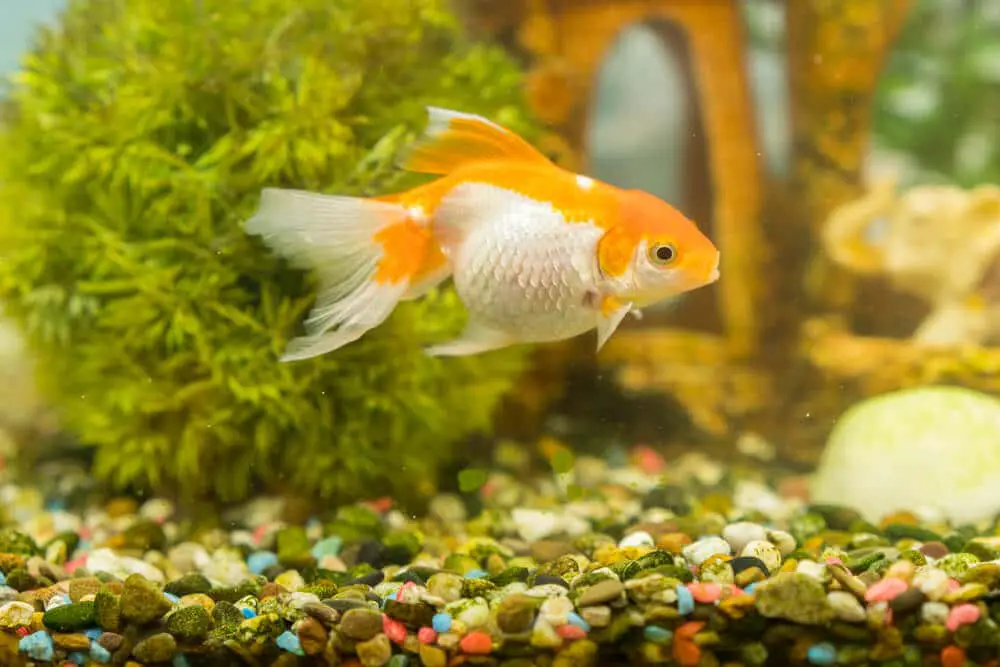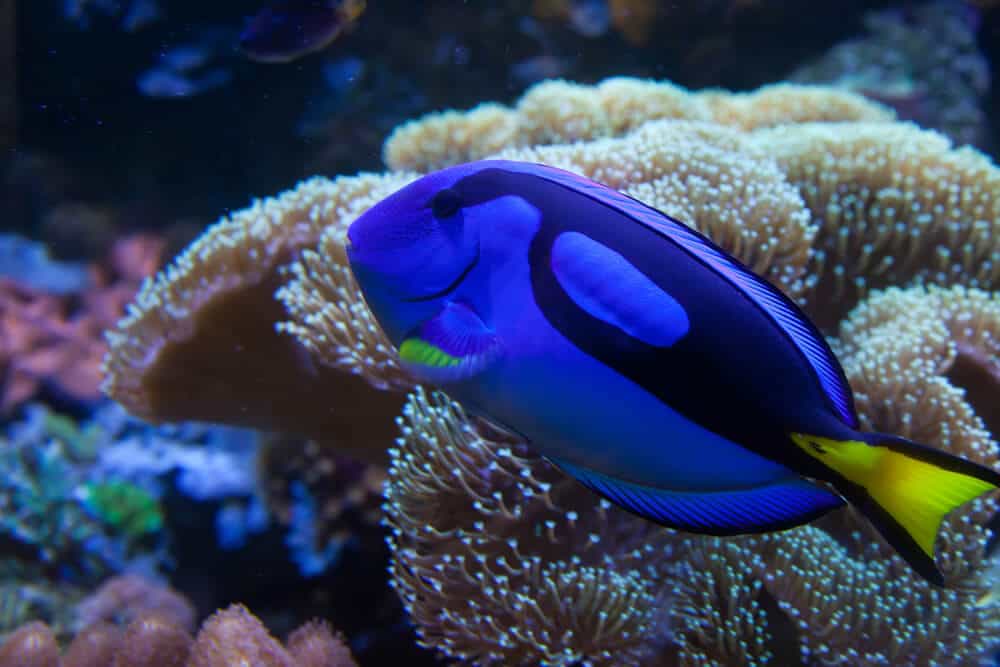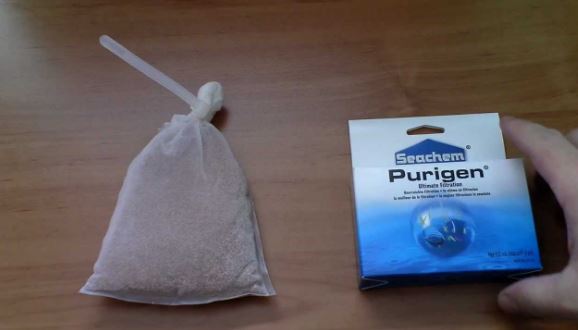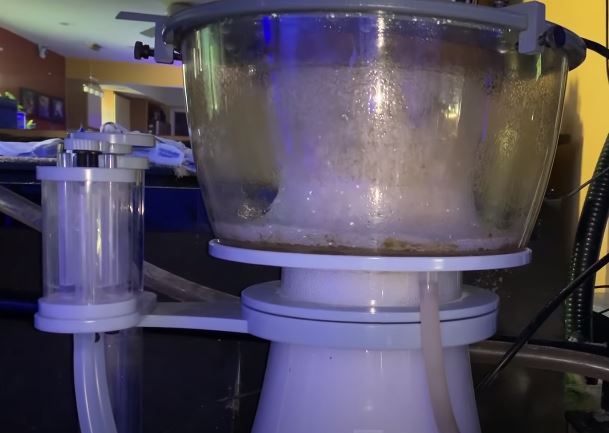
Biological filter media (BFM) is a part of your tank filtration system made to help good bacteria grow safely. These bacteria are a very important part of your filter. But to help them keep your aquarium healthy, you need the best BFM you can get.
So, what are the best biological filter media?
BFM can be a little complicated to understand. There are so many different types that it can be confusing for beginners at first.
BUT……
…….we’ve found the 4 best biological filter media to help you decide on the right one for your tank.
Biological filtration has been a big discussion point for a long time. It’s a very general term that describes many types of water filtration using bacteria. Most people only think about removing ammonia and nitrite when it comes to biofiltration. But reef aquarists think about lowering nitrate levels biologically too. We’ll be covering it all.
See also:
1/ What Are the Best Mechanical Filter Media?
2/ Top 7 Best Canister Filters for Your Home Aquarium (Freshwater & Saltwater)
Contents
- A/ Best Biological Filter Media Reviews
- B/ Related Questions
- Why Do I Need a Biological Filter?
- In What Order Should I Use Biological Filter Media (BFM)?
- If I Use More Than 1 BFM Type, in What Order Should I Put Them?
- How Much BFM Do I Need to Use?
- Can Sponge Be Used as BFM?
- How Often Do I Need to Change My BFM?
- Do I Really Need a Mechanical Filter and Chemical Filter if I Use a Lot of BFM?
A/ Best Biological Filter Media Reviews
There are many different kinds of BFM available. Most of them are made from either plastic, natural minerals, or man-made ceramics.
In this review, we’re going to look at the best of each to help you decide which one is the right one for your tank.
1. Seachem Matrix BioMedia 1 Liter
The Seachem Matrix is a bio media made of solid pumice that has been processed into 10mm pebbles. It has a rough surface, which is perfect for bacteria.
According to Seachem, 1 liter of their Matrix bio media gives you the same amount of surface area as 170 liters of plastic ball alternatives.
That’s because plastic balls (the 4th product) only give you an external surface area. Seachem Matrix, on the other hand, also gives you an internal “macroporous” surface area.
What’s very good about this product is that unlike other media, the macropores are big enough for nitrifying and denitrifying bacteria.
(To understand the nitrifying and denitrifying bacteria click here)
This means it can remove ammonia, nitrite, and nitrate at the same time.
Seachem Matrix can be used in any kind of tank. You only need 250ml for up to 25 gallons of water. 1 liter can be used for up to 100 gallons.
Interested in this product? Order Seachem Matrix BioMedia on Amazon today!
Pros:
- You can use Seachem Matrix in a filter bag or loose.
- Seachem Matrix never needs to be replaced.
- You can rinse the matrix without harming the bacteria.
- It removes ammonia, nitrite, and nitrate.
Cons:
- If you’re using a drip tray system, you may need to use a larger Pond Matrix instead.
2. EHEIM Substrat Pro Biological Filter Media (Sintered Pearl-Shaped Glass) 1L
Substrat Pro is a type of BFM material from Germany. Porous beads of glass are made by compressing (also known as “sintering”) very fine glass particles together. The process of sintering determines how porous the beads are.
Laboratories have used sintered glass similar to Substrat Pro to grow bacteria in a controlled environment. It’s a very good medium for this.
That’s why EHEIM decided to take the process and make their sintered pearl-shaped glass beads for aquarium filtration.
Even though EHEIM also makes their own range of biofilter canisters, you can use the EHEIM Substrat Pro BFM in any canister filter’s tray. This product is best for larger canisters in both freshwater and marine fish tanks.
Interested in this product? Order EHEIM Substrat Pro on Amazon today!
Pros:
- Glass beads won’t break down in your aquarium.
- You can easily clean the beads by rinsing them off.
- Removes ammonia, nitrate, and nitrate.
- You can use the EHEIM Substrat Pro in freshwater and marine tanks.
Cons:
- Can be a little expensive.
3. Fluval BioMax Bio Rings
Bio rings are usually made of silica and aluminum oxide. This combination makes for a very porous biofilter media.
Fluval BioMax Bio Rings are the best example on the market. Their internal porous system, like the Seachem Matrix BioMedia (see below), help more bacteria to grow than smooth biofilter media do.
The ring shape allows for water to flow through the biofilter media. This helps to make sure that bacteria are able to colonize much quicker. Fast colonization is very important for new aquariums or if you’ve just finished a deep clean.
Fluval BioMax Bio Rings are good for dealing with ammonia, nitrite, and nitrate in your tank. It can be used in any kind of aquarium.
Interested in this product? Order the Fluval BioMax Bio Rings on Amazon today!
Pros:
- You can use Fluval BioMax Bio Rings as a loose BFM in canister filters.
- If you don’t use a canister filter, you can also put Fluval BioMax Bio Rings into a filter bag.
- Fluval BioMax Bio Rings are relatively inexpensive.
- Perfect for nitrification and denitrification.
- You can use Fluval BioMax Bio Rings in freshwater, marine, and reef tanks.
Cons:
- Unlike other BFM, Fluval BioMax Bio Rings need to be replaced every 6 months.
4. Marineland Canister Filter Bio-Balls
Marineland makes these canister filter “bio-balls” which are a traditional nonporous plastic BFM.
Water is able to flow freely over and through the bio-balls. This makes it perfect for supporting the type of bacteria that feed on ammonia and nitrite.
If you have a freshwater aquarium, with or without plants, and a canister filter, then these bio-balls are good for you. They never need to be replaced.
Interested in this product? Order the Marineland Canister Filter Bio-Balls on Amazon today!
Pros:
- Marineland Canister Filter Bio-Balls never get dirty.
- You never need to replace them if properly maintained.
- They’re not expensive
- Bio-balls work very well for ammonia and nitrite.
- Perfect for freshwater tanks.
- Can also be used for marine aquariums with no plants.
Cons:
- The bio-balls cannot help regulate nitrate because they are nonporous.
See also: 6 effective ways to control your tank’s nitrate levels
B/ Related Questions
You probably have a few more questions now that you know what the best BFM are. Don’t worry: we have the answers right here!
Why Do I Need a Biological Filter?
Bacteria grows everywhere in your aquarium. On the glass, on your gravel, even on any ornaments you have in your tank.
So you might be wondering why you need a biofilter at all if the bacteria is already everywhere.
But it’s very important for you to have one in place.
That’s because when you clean your aquarium’s glass, rinse your gravel, scrub your ornaments, or even change lots of water at a time, you disturb that bacteria. When your bacteria is disturbed or too much is removed too quickly, you lose some of your natural biofilters.
Even if you have to do a deep clean because your tank got neglected, the bacteria in your biofilter will keep working to keep your aquarium healthy.
Too much ammonia, nitrite, or even nitrate can be deadly for your fish and plants. So these bacteria are your friends. Your BFM helps you to look after them.
After a deep clean, there’s very little or even no bacteria left on your glass, ornaments, and gravel. Even the loose bacteria that floats in your water is gone.
The bacteria in your biofilter makes more bacteria that colonize the rest of your tank for you.
In What Order Should I Use Biological Filter Media (BFM)?
You should always put your BFM in the cleanest part of your filtration system.
If you don’t let water flow through your mechanical filter first, the bigger, heavier particles will settle in and on top of your biofilter. All the sludge and debris, like solid fish waste and uneaten fish food, will clog up your BFM.
When this happens, you’ll have a lot of nitrite-friendly bacteria taking over the bacteria that feeds on nitrate. This is very bad for your fish.
That’s why you should always make sure the water flows through your mechanical filter first.

This way, you can clean or replace the mechanical filter without disturbing the good bacteria in and on your biofilter.
If I Use More Than 1 BFM Type, in What Order Should I Put Them?
You don’t actually need to use more than 1 BFM type if you use a product that deals with ammonia, nitrite, and nitrate. However, if you use something that doesn’t affect ammonia, you’re going to need to add at least 1 more type.
In this case, it’s doesn’t really matter what order you put your BFM in……..
If you’re using a canister filter, you can mix the loose BFM together if you choose. The same is true for using filter bags. Just be careful mixing 2 types of BFM, as some (like the Fluval BioMedia Bio Rings) do need to be replaced while others don’t. If 1 of your BFM does need to be replaced but the other doesn’t, it’s going to be easier for you not to mix them.
How Much BFM Do I Need to Use?

This can be a little tricky to answer. Even though some manufacturers will tell you how much BFM to use per gallon of water, not all of them do. This is because a lot of BFM is prepackaged for a specific type of filter.
That means there’s no one answer to this question. How much BFM you really need depends on a lot of things. For example, the size of your fish and how much food you give them can affect how much BFM you need.
The best way to see how much BFM you need is to use the amount the manufacturer suggests. Carefully monitor your ammonia, nitrite, and nitrate levels and add more media if you need to.
Can Sponge Be Used as BFM?
While some people suggest only using sponges as mechanical filter media, you can actually use them as BFM as well.
See also: What Are the Best Mechanical Filter Media?
You need to be careful using sponges for mechanical and biological filter layers at the same time, though. This is called “dual purposing”.
If you are dual purposing, then you need to use more than one sponge at the same time.
Just as importantly, you need to make sure that the sponges you use when dual purposing have different degrees of coarseness. You can’t use the exact same type of sponge as a mechanical and a biological filter at the same time. This won’t filter your water properly.
When dual purposing, put the most coarse sponge first as a mechanical filter. The finer sponges work very nicely as BFM if need be.
You should also be careful to clean these sponges at different times. Otherwise, you’re going to disturb your bacteria.
Be very careful when buying sponges to use in your aquarium. It doesn’t matter if you want to use them for mechanical filtration, biofiltration, or both. Some sponges aren’t safe to use as any kind of filter.
Take a look at this YouTube video below to find out how to see if a sponge brand is safe for your aquarium.
How Often Do I Need to Change My BFM?
With most BFM, you don’t ever need to change or replace them at all. As you saw with 3 of the BFM we reviewed above, all you need to do is rinse them off.
However, if you’re using the Fluval BioMedia Bio Rings, you’ll need to replace some of them every 6 months. Sometimes, you make need to change them more often.
The only other time you might need to replace your BFM is if you’re using sintered glass, like the EHEIM Substrat Pro. And even then, you only need to change them if the beads do start to break down. But that should never happen in a healthy tank.
See also:
How to Change Your Filter Without Losing Bacteria
Normally, even if your aquarium was neglected and you need to do a deep clean, you can keep the same BFM.
Instead of changing your BFM, just give it a rinse if your water flow rate is too slow. You should also rinse your BFM if you notice that there is a lot of fish waste and dirt building up.
Never rinse your BFM under the tap, though. The chlorine will kill all your bacteria. Instead, use some of your aquarium water to rinse your BFM.
Do I Really Need a Mechanical Filter and Chemical Filter if I Use a Lot of BFM?
All 3 filter types – mechanical, biological, and chemical – are recommended. However, at the very least, you should always have both a mechanical and biological filter in place.
That’s because they serve very different purposes. While you can dual purpose by using sponges as both mechanical and biological filter media, as mentioned earlier, you still need to use several different sponges.
If you decide to use a biological filter without a mechanical filter, your BFM is going to become clogged very quickly. You should always have a mechanical filter before your BFM to prevent this from happening by capturing all the bigger debris.
Otherwise, your tank is going to have too much nitrite, which is very bad for your fish.
The chemical filter isn’t absolutely necessary, but it’s always a good idea to have all 3 filter types. Chemical filters are placed behind the mechanical and biological filters, so it’s the last filter your water flows through.
All the things that mechanical and biological filters cannot take care of, chemical filters do. This includes undissolved material that can make your tank water cloudy or smell bad.










